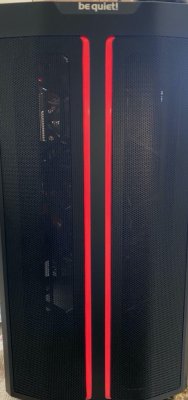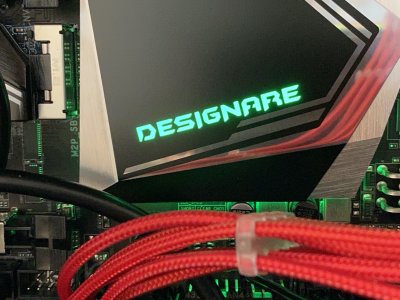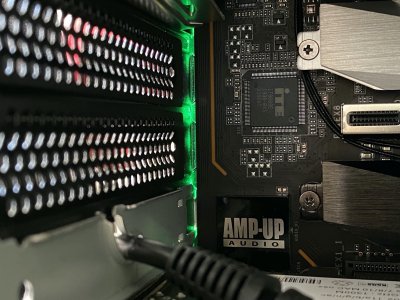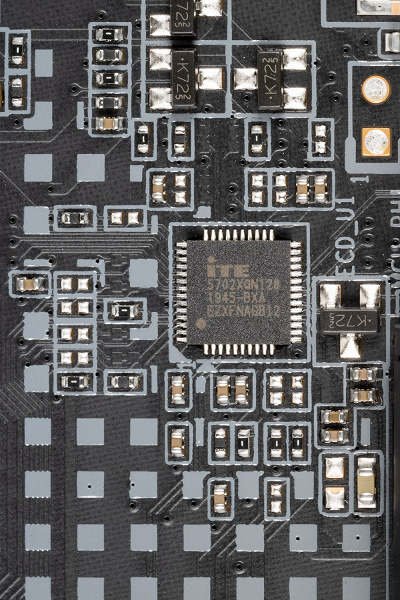*** Gigabyte Z490 Vision D ***
RGB Fusion 2.0 Control
IMPORTANT NOTE:
The usage examples in this post are no longer valid. Please see this post for correct usage information
The Z490 Vision D supports RGB Fusion 2.0. There is no support for RGB Fusion in BIOS at this time. Gigabyte does, however, provide a Windows utility for controlling lighting effects, but there's no support for macOS.
Fortunately, RGB Fusion is controlled by an ITE Tech chip that is mapped to USB port HS12. After a couple days of investigation it was possible to reverse engineer the USB traffic and build an
RGB Fusion 2.0 driver for
liquidctl. Development of the driver is nearly complete, but for the moment it is specifically written for the Vision D.
The Vision D provides
seven lighting channels as shown below:
Three of the channels are for LEDs built onto the motherboard:
- IOLED controls lighting effects next to the IO panel
- PCILED controls lighting effects on an array of LEDs just behind the PCI slots
- PCHLED controls lighting effects on the PCH shroud
Four of the channels are wired to four lighting headers:
- LED1 and LED2 control standard 12V RGB devices (4 pin)
- DLED1 and DLED2 control Addressable 5V RGB devices (3 pin)
The new driver for liquidctl allows each channel to be independently controlled. It also allows all channels to be set to the same lighting effect at the same time, via channel name
sync.
All seven lighting channels support the following color modes:
- OFF (yes, we can turn the lights off and on at will)
- static
- pulse
- flash
- double-flash
- color-cycle
The two
addressable RGB headers (DLED1 and DLED2) are capable of more advanced color modes, but those modes require the driver to send a continuous stream of control packs on the USB port. A future version might support these additional modes, but they are not supported at this time.
What does this look like? Here's a small gallery:














The new driver is currently located in my GitHub development branch:
Cross-platform CLI and Python drivers for AIO liquid coolers and other devices - GitHub - CaseySJ/liquidctl at Add-support-for-Gigabyte-RGB-Fusion-2.0

github.com
Will incorporate this into the Vision D build guide (post #1) once it has matured a little more.
Usage Examples:
In the examples below, please replace
-d 0 with the ID corresponding to
Gigabyte RGB Fusion 2.0. This can be obtained by typing
liquidctl list.
- Turn off all LEDs connected to all seven channels:
liquidctl -d 0 set sync color off
- Set all LEDs on all seven channels to "color cycle":
liquidctl -d 0 set sync color color-cycle --speed fastest
- Set the "Designare" logo to static color red:
liquidctl -d 0 set PCHLED color static 0000FF
- Where colors are specified as GGBBRR
- GG = green value from 00 to FF
- BB = blue value from 00 to FF
- RR = red value from 00 to FF
Limitations:
- Does not provide complex ARGB lighting modes (yet) on DLED1 and DLED2.
- Does not control LEDs on DIMM modules. Hopefully we'll find a way.
Acknowledgements:
- Special thanks to Jonas Malaco (developer of liquidctl) for technical assistance with USB protocol debug.
















gitlab.com

